1. Great Smoky Mountains National Forest (North Carolina & Tennessee)
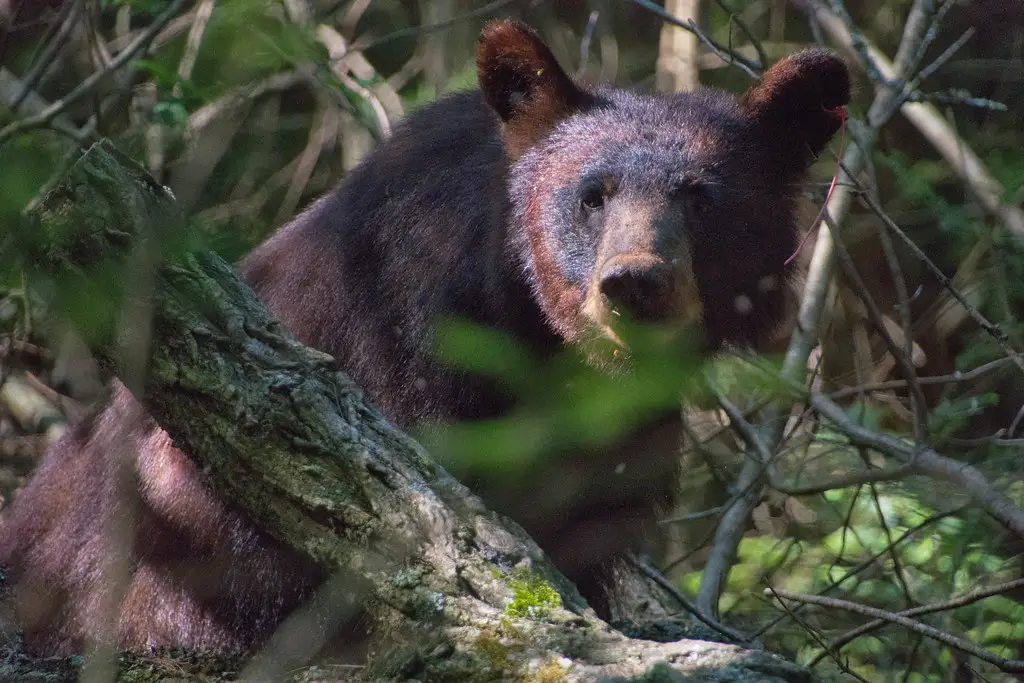
The Great Smoky Mountains National Park is home to one of the largest populations of black bears in the U.S., with an estimated 1,500 to 1,900 bears inhabiting the region. This area is well-known for its diverse ecosystems, which include dense forests, lush valleys, and high mountain peaks. Black bears here are abundant due to the abundant food sources available, such as acorns, berries, and small mammals. The park’s rugged terrain provides ideal shelter and plenty of space for bears to roam freely. These bears are a common sight in the warmer months, as they forage for food and move to lower elevations in search of sustenance. According to the National Park Service, the park’s large size—spanning 522,427 acres—ensures that bears have enough space to live and thrive without too much interaction with humans. The park is one of the most visited in the country, and sightings of black bears are common, especially on the trails and in the less-trafficked areas of the park.
Due to its popularity, visitors are encouraged to be bear-aware, respecting wildlife and giving these creatures plenty of space. Conservation efforts have helped the bear population remain stable over the years, and the forest’s role in maintaining the health of local wildlife has been crucial. The Great Smoky Mountains are also home to other species of animals, and the bear population helps maintain the balance of the forest’s ecosystems. The park’s remote wilderness areas provide an excellent opportunity for wildlife enthusiasts and hikers to experience black bears in their natural habitat. The Smokies remain a hotspot for those hoping to see these majestic animals in the wild, offering unique opportunities for both bear sightings and hiking adventures.
2. Chattahoochee-Oconee National Forest (Georgia)
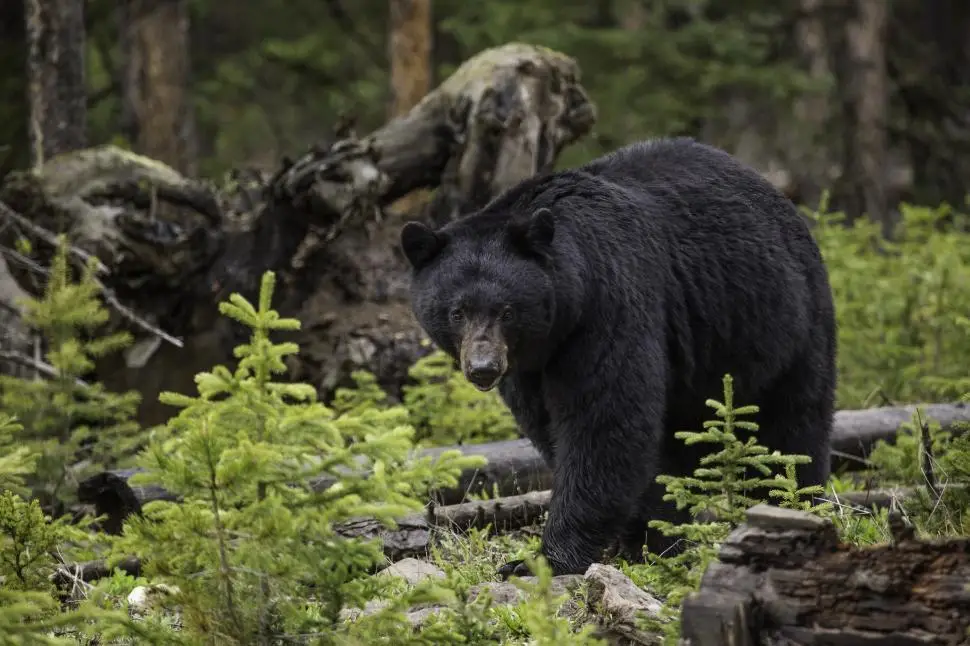
Located in Georgia, the Chattahoochee-Oconee National Forest has an estimated black bear population of 1,000 to 1,200. According to the US Forest Service, this expansive forest covers more than 867,000 acres, with terrain ranging from dense hardwood forests to beautiful river valleys. The forest’s diverse landscapes provide an array of habitats suitable for black bears, including areas rich in food sources like berries, acorns, and small mammals. The rich vegetation and the multitude of water sources, such as the Chattahoochee River, give the bears an abundant food supply year-round. The forest is a perfect place for these bears to thrive, as it offers them ample cover and space to roam, largely undisturbed by human activity. The Chattahoochee-Oconee region has seen a steady increase in bear sightings in recent years, as the population has slowly rebounded due to successful wildlife management programs.
Visitors often spot black bears in more remote parts of the forest, especially in areas with dense underbrush, where bears can forage and avoid human interaction. The forest is also home to a variety of other wildlife species, making it an attractive destination for nature lovers and photographers. Conservation efforts in the area have helped to maintain the forest’s delicate balance and ensure that both bears and other wildlife continue to thrive. Despite its large bear population, the forest remains a popular spot for hiking, camping, and wildlife viewing. The presence of black bears here underscores the healthy ecosystem of the forest and highlights the success of local conservation programs. The Chattahoochee-Oconee National Forest remains one of the best places to experience wildlife in Georgia and provides a true opportunity for visitors to observe black bears in the wild.
3. Pisgah National Forest (North Carolina)
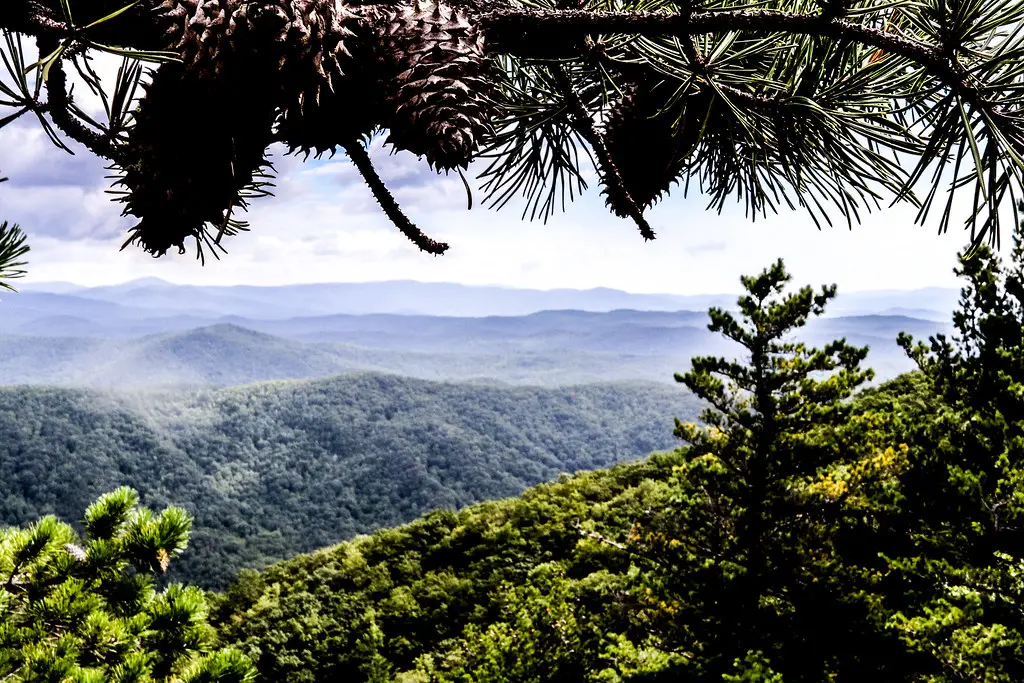
Pisgah National Forest is home to an estimated 1,000 black bears, thanks to its rugged terrain, abundant food sources, and diverse ecosystems. This expansive forest spans over 500,000 acres of diverse habitats, including dense hardwood forests, high mountain ridges, and deep, secluded valleys. The forest is known for its incredible biodiversity, which supports not only black bears but also many other species of wildlife, including deer, elk, and wild turkeys. The variety of ecosystems within the forest provides an excellent mix of shelter and food for bears. Acorns, berries, insects, and small mammals are readily available for the bears to forage throughout the year. Pisgah’s dense forest areas give black bears the space they need to live with minimal human interaction.
Due to the remoteness of many parts of the forest, black bear sightings are more common in the less trafficked areas, especially in the higher elevations. According to the US Forest Service, hikers should take note of ways to stay safe in areas where bears may be seen. The forest’s diverse terrain means that there are opportunities to spot bears in both the lower, flatter areas and in the steep, forested hillsides. Pisgah is also home to numerous hiking trails and scenic drives, where visitors can enjoy the beauty of the wilderness while keeping an eye out for bears. Conservation efforts have been crucial in maintaining a stable bear population here, as they have helped prevent overhunting and protected the forest from excessive development. Pisgah National Forest’s healthy bear population is an important indicator of the overall ecological health of the region.
4. Sierra National Forest (California)
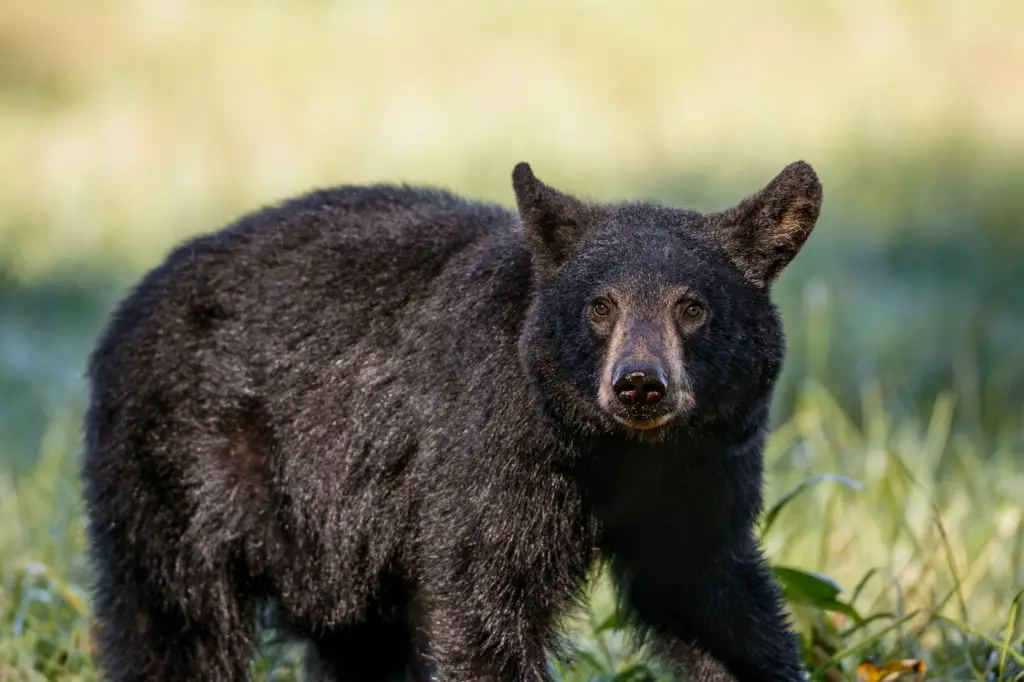
Sierra National Forest, located in the Sierra Nevada mountain range in California, is home to a population of around 500 to 700 black bears. The forest spans over 1.3 million acres and offers a variety of habitats, from alpine meadows to dense conifer forests and rugged mountain terrain. These diverse landscapes provide black bears with ample food and shelter, supporting their population. The forest’s numerous rivers, lakes, and streams provide a rich source of sustenance, including fish, insects, and plants. The variety of vegetation, including berries, acorns, and other fruits, ensures that black bears have access to food throughout the year. The higher elevations of the Sierra Nevada also provide the perfect environment for black bears to seek cooler temperatures in the summer months.
Visitors to the forest may encounter black bears in more remote areas, especially near the wilderness areas that are less frequented by humans. While black bear sightings are common in the forest, the bears typically avoid populated areas, preferring the solitude of the more rugged sections of the forest. As discussed by the Sierra Vista Scenic Byway, this forest is also known for its stunning vistas, including views of the nearby Yosemite National Park, making it a popular destination for hikers, campers, and wildlife enthusiasts. Efforts to protect the bear population in this region have helped ensure that bears continue to thrive in this natural environment. As the bear population continues to grow, the forest remains a critical part of California’s conservation efforts, balancing human activity with the needs of wildlife.
5. Daniel Boone National Forest (Kentucky)
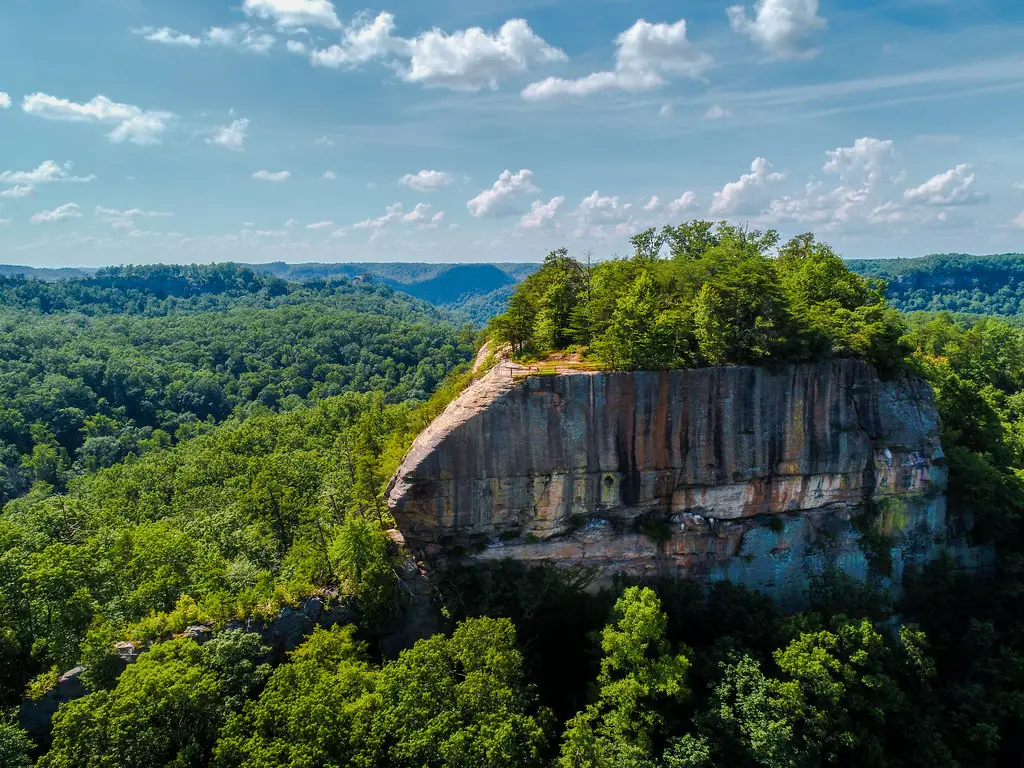
Daniel Boone National Forest in Kentucky supports an estimated 800 to 1,000 black bears, thriving within the forest’s diverse range of habitats. According to the US Forest Service, this forest spans over 700,000 acres. It includes everything from steep mountain slopes to deep hollows and flowing rivers, providing an ideal environment for black bears. The forest’s dense woodlands are full of food sources, including acorns, berries, and small mammals, making it an excellent habitat for the species. Bears are especially abundant in the forest’s remote areas, where they can forage and move freely without interference from humans. The presence of water bodies, such as the Laurel River, also attracts bears, who rely on these sources for hydration and food. Daniel Boone National Forest has become a haven for black bears due to successful conservation programs and limited human encroachment into the bear’s natural range. Conservation efforts, including bear population monitoring and habitat protection, have led to the gradual increase in the bear population over the past several decades.
The forest is popular for outdoor activities, such as hiking, camping, and wildlife watching, where visitors have the chance to spot black bears in their natural habitat. The bears in Daniel Boone National Forest are most often seen early in the morning or late in the afternoon when they are most active. The forest’s overall health, supported by these conservation efforts, benefits not just black bears but the diverse ecosystem of the region. The increasing sightings of black bears in the area have made Daniel Boone National Forest one of the top locations for wildlife enthusiasts hoping to observe bears in the wild. With its large size and rich biodiversity, Daniel Boone remains an important natural resource in the southeastern U.S. and a vital location for black bears.
6. Black Hills National Forest (South Dakota)
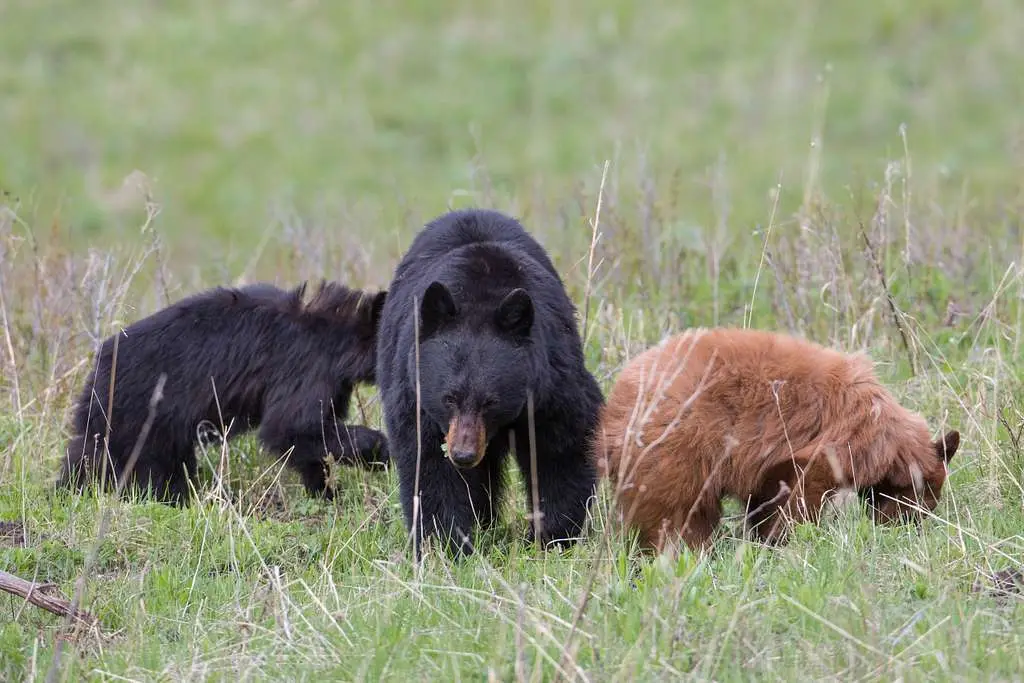
The Black Hills National Forest, located in South Dakota, is home to a population of around 300 to 400 black bears. This forest is a unique and remote area, covering over 1.2 million acres of diverse landscapes, including pine forests, grasslands, and wetlands. The Black Hills are a haven for black bears due to the variety of habitats and abundant food sources. These bears feed on berries, acorns, and small mammals, making use of the many habitats that support their foraging needs. The forest’s seclusion makes it an ideal place for bears to thrive, as they can roam freely without the pressure of human activity. The forest’s mountainous terrain and isolated valleys provide a mix of areas where bears can find food, shelter, and water, all essential for their survival. In recent years, the bear population in the Black Hills has been increasing, in part due to conservation efforts that protect the forest’s ecosystem and bear habitats.
The Black Hills are also home to other wildlife, including bison, elk, and wild turkeys, making it an important area for biodiversity. Wildlife watching is popular in the Black Hills, especially for those hoping to spot a black bear in the wild. Bears in this region are often found in the more remote, dense parts of the forest, where they can avoid human interaction. The forest’s ruggedness and diverse habitats have made it a prime location for black bears, and ongoing conservation work will ensure that their numbers continue to grow in the future. For wildlife enthusiasts looking to experience black bears in their natural environment, the Black Hills National Forest offers an unforgettable experience.
7. Gifford Pinchot National Forest (Washington)
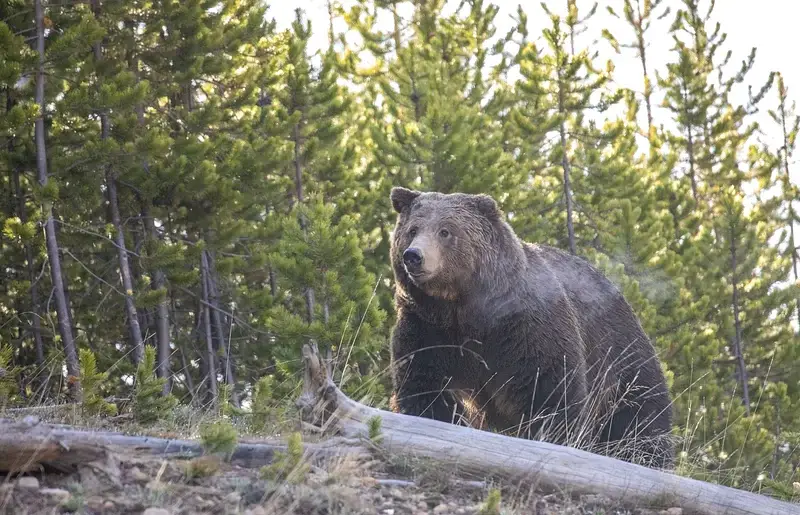
Gifford Pinchot National Forest in Washington State is home to an estimated 600 to 800 black bears, thriving within the diverse landscapes of the forest. This expansive national forest covers over 1.3 million acres, offering a variety of habitats, from dense old-growth forests to volcanic landscapes and rushing rivers. The forest is part of the Pacific Northwest’s rich wilderness, and it provides an excellent environment for black bears, who have access to abundant food sources such as berries, fish, and small mammals. The proximity to Mount St. Helens and other volcanic features adds to the forest’s unique character and provides a mixture of habitats for wildlife. Black bears are particularly common in the more remote areas of the forest, where they have ample space to roam and forage. The Gifford Pinchot region is a key area for bear conservation efforts in the Pacific Northwest, and the healthy bear population is a testament to the success of these initiatives. The forest’s rugged terrain, including its volcanic plateaus and river valleys, creates an ideal environment for these animals to live and thrive.
Visitors to the forest may encounter black bears along hiking trails, at campsites, or in the deeper wilderness areas, particularly in the early morning or evening when bears are most active. Wildlife enthusiasts flock to the area to catch a glimpse of the bears, and there are numerous opportunities for eco-tourism, photography, and outdoor adventures. Gifford Pinchot National Forest is also home to a variety of other wildlife species, making it a popular destination for nature lovers. The forest’s diverse habitats ensure that bears, along with other species, continue to thrive. As conservation efforts continue, Gifford Pinchot remains a vital location for the black bear population in the Pacific Northwest.
8. Allegheny National Forest (Pennsylvania)
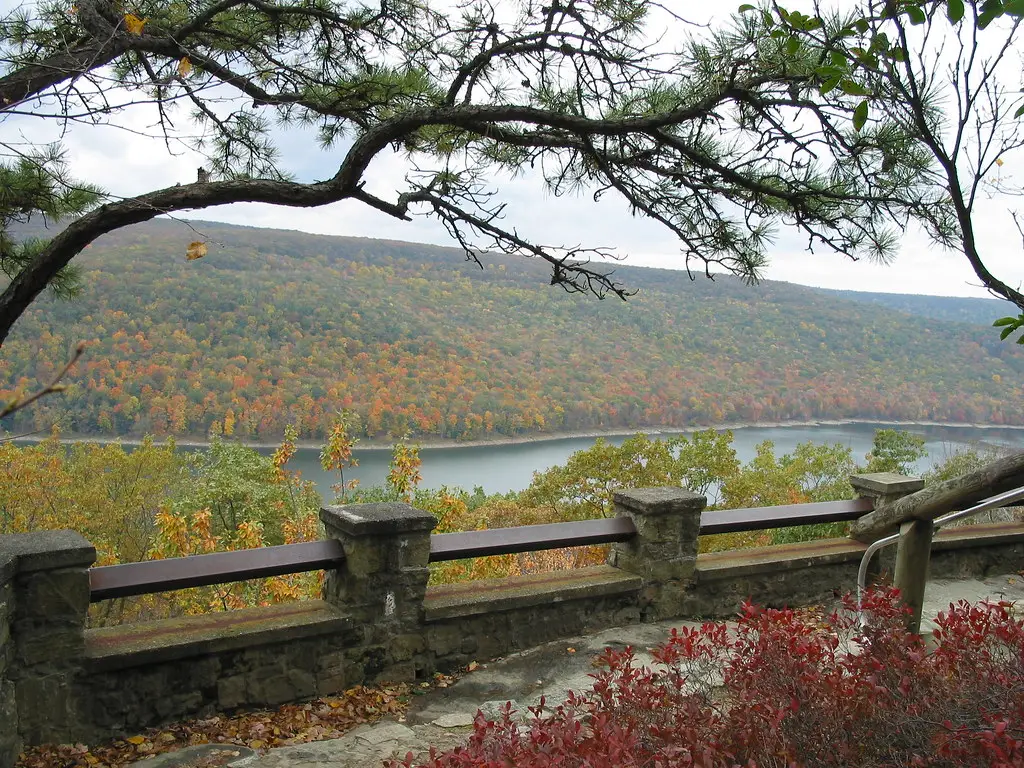
Allegheny National Forest in Pennsylvania is home to a black bear population estimated at 500 to 700. This 500,000-acre forest spans a mix of steep, rugged terrain, wetlands, and dense woodlands, offering an ideal environment for black bears. The diversity of habitats provides these animals with an abundance of food sources, including berries, acorns, and small mammals. The forest’s dense canopy and underbrush offer excellent cover for bears, allowing them to move undetected through their environment. Allegheny is known for its rich biodiversity, with not only black bears but a wide range of wildlife, from deer to wild turkeys. Black bears in this region often roam the forest’s remote areas, where they can find food, water, and shelter without much disturbance from human activity. The forest’s expansive size means there is plenty of space for the bear population to grow and thrive.
Allegheny has seen a steady increase in bear sightings, particularly in the areas of the forest that are farthest from urban development. Outdoor enthusiasts often visit the area to observe black bears and other wildlife in their natural habitats. Conservation programs have played a crucial role in managing the bear population in this region, ensuring that both the bears and the surrounding ecosystems are protected. The presence of black bears is an indicator of the forest’s ecological health, and their continued presence highlights the success of these conservation efforts. Allegheny National Forest remains a top destination for wildlife watchers hoping to see black bears up close and in the wild.
9. Caddo-LBJ National Grasslands (Texas)
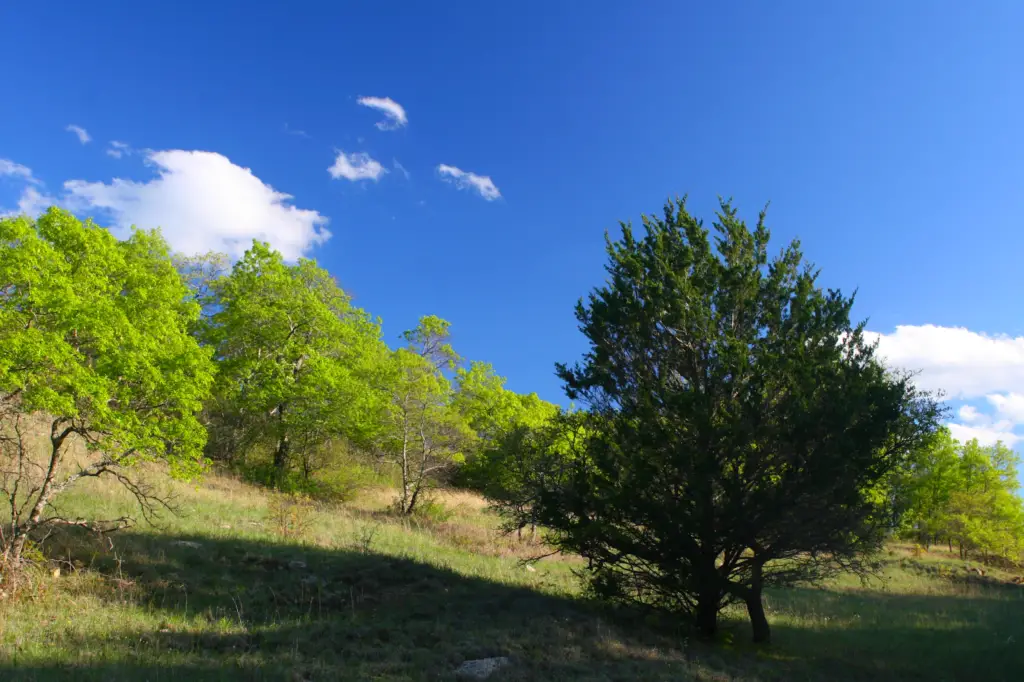
The Caddo-LBJ National Grasslands in Texas are home to a small but growing population of black bears, estimated at around 100 to 150. This relatively new habitat for black bears is located in the northeastern part of the state, where the mix of grasslands, forests, and wetlands provides a unique environment for the species. While Texas isn’t typically associated with large bear populations, black bears have slowly expanded their range into areas like the Caddo-LBJ National Grasslands. This region’s variety of habitats, from woodlands to open grasslands, offers bears both cover and access to food sources such as berries, insects, and small mammals. The bear population here has been steadily increasing due to efforts to protect and expand bear habitats in the state. These efforts include establishing wildlife corridors and preventing habitat loss due to urban development.
The bears in the Caddo-LBJ region are often spotted in the more secluded areas of the grasslands, where they can forage and rest away from human activity. The growing bear population in this area is a positive sign of successful conservation efforts and habitat restoration. Visitors to the Caddo-LBJ National Grasslands may have the opportunity to spot black bears in these more remote, natural areas. While the population remains smaller than in other national forests, the presence of bears here is an encouraging sign of their expanding range. Conservation initiatives continue to support the growth of the black bear population in Texas, ensuring that these magnificent animals can continue to thrive in the state.
10. San Juan National Forest (Colorado)
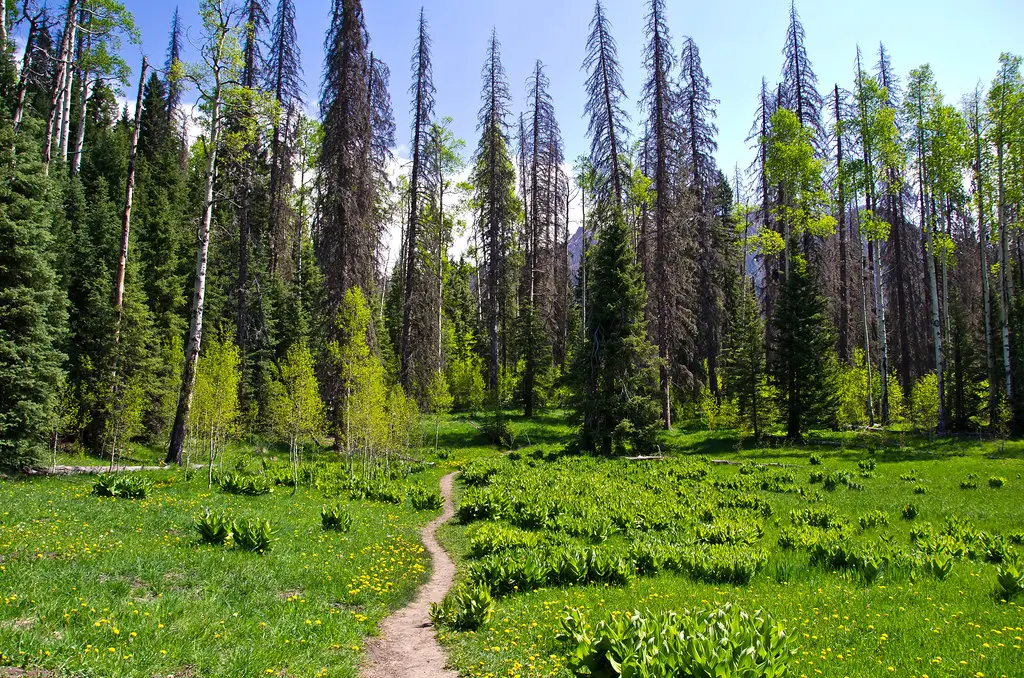
San Juan National Forest in Colorado is home to an estimated 300 to 400 black bears. This rugged forest is located in the San Juan Mountains and spans over 1.8 million acres of diverse landscapes, including dense forests, high mountain meadows, and alpine rivers. The diverse terrain provides an ideal environment for black bears, who can find food and shelter in abundance. The forest’s numerous streams and rivers provide a rich source of food for bears, including fish and small mammals. The high elevations in San Juan National Forest are perfect for bears seeking cooler temperatures in the summer months. The varied ecosystems within the forest make it an excellent habitat for wildlife, and black bears are often spotted in more remote areas away from the main hiking trails.
Conservation efforts in the forest have helped to protect the bear population, ensuring that they continue to thrive despite human activity. The forest’s diverse habitats are home to a wide range of species, making it a popular destination for wildlife enthusiasts. Black bears are particularly active in the early morning or late evening, when they are foraging for food. The natural beauty of the forest, combined with its growing bear population, makes San Juan National Forest an excellent location for wildlife watching and outdoor adventures. Visitors to the area can enjoy stunning mountain views and potentially spot black bears in their natural habitat, experiencing the wilderness of Colorado firsthand.


